- Joined
- 28 Apr 2021
- Messages
- 318
- Reaction score
- 4
- Country

I just had a couple of radiators moved and pipework chased into the block a bit. A section of the dot and dabbed plasterboard has been removed. I’m not sure how to go about repairing this - I was thinking, wrap the pipes in something and then dot and dab over the whole area with as few pieces of plasterboard as I can manage. Not sure how to get the pipes thru the board.
In the 4th photo there is a section of concrete left where the skirting was, which is solid but moves a little bit. Should i hack it out of there before repairing or leave it?
How would you do it?
Thanks
In the 4th photo there is a section of concrete left where the skirting was, which is solid but moves a little bit. Should i hack it out of there before repairing or leave it?
How would you do it?
Thanks
Attachments
-
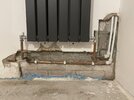 CC975B33-366E-4BA5-BF5F-BBD87B903020.jpeg326.8 KB · Views: 118
CC975B33-366E-4BA5-BF5F-BBD87B903020.jpeg326.8 KB · Views: 118 -
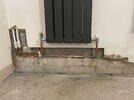 C00A55F8-7654-46B9-AAF1-C421A9F722BC.jpeg348 KB · Views: 116
C00A55F8-7654-46B9-AAF1-C421A9F722BC.jpeg348 KB · Views: 116 -
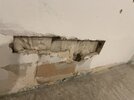 6E39E45A-A9BB-4A7D-B0CA-4FA9C9D1A67C.jpeg281 KB · Views: 117
6E39E45A-A9BB-4A7D-B0CA-4FA9C9D1A67C.jpeg281 KB · Views: 117 -
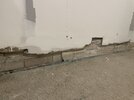 9F2001AC-40C1-44CB-BD59-8A18062D6F49.jpeg342.1 KB · Views: 105
9F2001AC-40C1-44CB-BD59-8A18062D6F49.jpeg342.1 KB · Views: 105 -
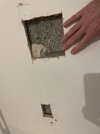 72363761-1D8F-4366-B606-D5A43C249E47.jpeg202 KB · Views: 105
72363761-1D8F-4366-B606-D5A43C249E47.jpeg202 KB · Views: 105
